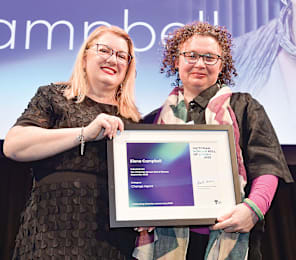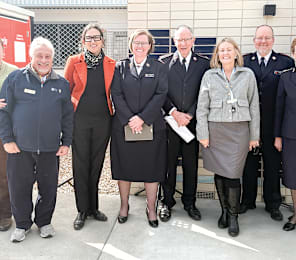WHILE refurbishment of train carriages at Coal Creek is a bright sign of progress, Friends of Coal Creek (FOCC) are concerned with delays in planning for the Park’s future financial stability, and with the loss of its team leader Kim O’Connell who was integral in planning and running events.
Added to these concerns is council’s decision not to continue financially supporting the park’s annual Halloween event.
FOCC president Roger Powell expressed the group’s disappointment that Kim’s contribution has ended.
“He was a breath of fresh air and brought to Coal Creek a range of skills that weren’t there previously, and we’ve lost that, and we are the poorer for it,” Roger said, noting that among other things, Kim specialises in running events and programs.
Council CEO Allison Jones said it is not yet determined whether Kim will be replaced.
“Council commits significant resources to Coal Creek operations and, as such, it is appropriate to responsibly review staffing resources when positions become vacant,” she said.
The CEO noted that the Park is being managed by experienced members of the existing council team, who have strong knowledge of its operations.
The FOCC president spoke of council’s decision not to fund the Coal Creek Halloween evening, suggesting that contrasts with the aims of the Coal Creek Strategic Plan.
“Within the Strategic Plan there are multiple references to events, both community and commercial, large and small, being supported and being critical to the long-term development of Coal Creek,” Roger said.
He noted council said its decision not to continue supporting the Halloween event is based on cost, arguing that is inconsistent with achieving the aims of the Strategic Plan.
“The Halloween event requires significant resourcing from council staff and volunteers and after a review of activities planned, it was determined not to proceed in 2025,” Allison said.
Roger expressed concern about such a decision being made without any consultation, particularly given the strong involvement of community groups in running the Halloween event.
“Because we’ve had some of these events, the Park has benefited,” he said, pointing out that aspects such as drainage and the internal roads system have been improved as a result.
As for the Coal Creek Strategic Plan, Roger said that after all the effort and public consultation that went into its creation, it couldn’t be quickly acted upon because council then began embarking on a Financial Plan for the Park.
That process has included engaging consultants to develop a business case for Coal Creek, with $50,000 set aside in the council Budget to facilitate that.
“It has now taken nearly 10 months, and we haven’t seen the first draft,” Roger said, remarking that while the business case for the Park was originally expected to be presented to councillors at the August council meeting, that is now not expected to occur until November.
“The business case is still progressing and will be presented by the end of the year; the August date was approximate only,” the council CEO responded.
A major aim of the Coal Creek Strategic Plan is to reduce the Park’s financial reliance on council over time, with council acknowledging in the plan that it doesn’t expect Coal Creek to be completely self-sufficient, certainly not in the short term.
“The goal is to ensure it covers a larger share of its operating costs and is able to fund improvements and maintenance as the Strategic Plan is implemented,” it is stated.
One of the short-term actions outlined relates to the holding of marquee events throughout the year to draw crowds, with the aim of continuing “to build Coal Creek’s reputation as a unique venue for events such as festivals and holiday celebrations”.
That leads into a long-term goal to “position Coal Creek as the key venue for major events and exhibitions in South Gippsland, leveraging its unique setting and facilities”.
While an important short-term aim expressed in the Strategic Plan is to restore the operations of Coal Creek’s bush tramway to attract train enthusiasts and young families and raise revenue, the track restoration is proceeding slowly, with Roger explaining that is due to the reliance on volunteers who have constraints on their time.
He argues funding is needed to pay people to undertake that work in a timely fashion.
On the bright side, much has been achieved in the restoration of the separate large railway carriages.
The first class carriage roof, which was in far worse condition than imagined is now repaired, with the other carriages requiring less work.
Once everything is right with the roofs, the next step is to repair the inside of the carriages, with further funding needing to be secured for that stage.
Roger highlighted a couple of other positive initiatives council is taking, saying it has committed to doing required work on the railway station platform and to buying materials to re-weatherboard the Jeetho school building.
“So, there are some positive things going on, just that we’re perplexed we’re not seeing events and other activities taking place,” he said, adding that he has heard there are at least a couple of music gigs planned for summer.










